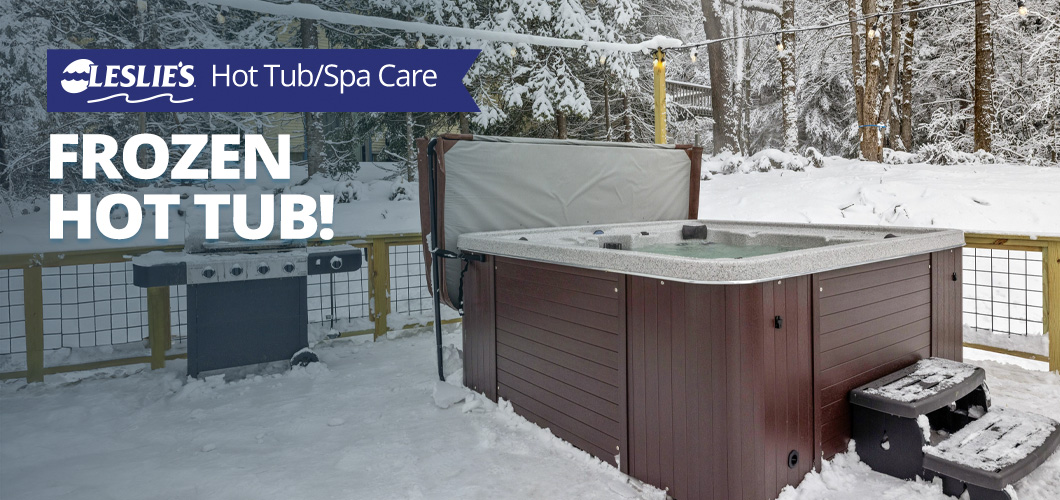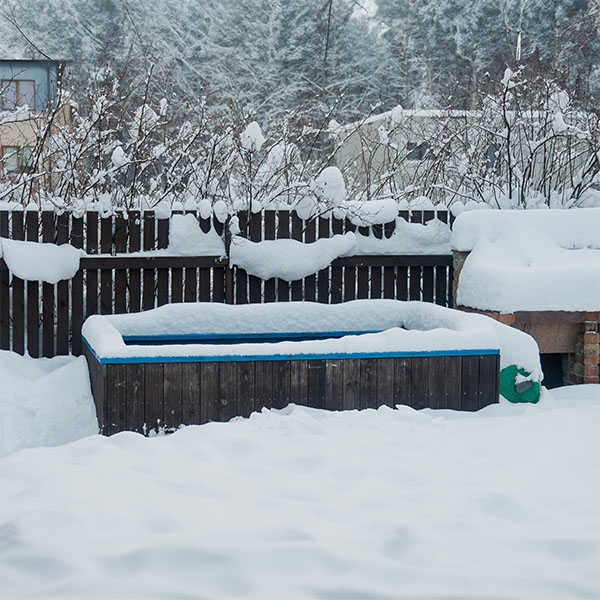
Frozen Hot Tub!
Most digital spa controllers will have a freeze monitor that will turn on the pump if the outside air temperature reaches 40ºF. Some will even turn on the heater if the water temperature drops too low. But many air controls or simple hot tubs or inground spas don't have built-in freeze protection.
How to Prevent Hot Tub Freeze Damage
Set an Temperature Alert on your Phone
There's an app for that! Instead of relying on the weather report, you can use one of the many apps that will alert you (via smartphone) that temperatures below a certain set point are expected. Then, make sure the spa is hot and operating.
Install a Digital Spa Pack with Freeze Protection
As mentioned earlier, if you have air controls, or an inground spa, you may not have built-in freeze protection. Upgrading to a digital spa pack, or for inground spas, installing a digital time clock, will allow your system to automatically turn on the pump when low outside temps are sensed.
Keep the Spa Hot During Winter
For protection from power outages, keeping your spa hot all winter long will give you the most amount of time. A spa that is kept at 100ºF and covered tightly can keep its heat for 24-36 hours during a power outage. An unheated spa, with very low temperatures, can freeze solid in only an hour of not circulating.
Keep Your Spa Cover Tightly in Place
In some parts of the country, it's so cold that leaving a spa cover off for just a few hours can cause the spa water to actually begin to turn slushy.
How to Unfreeze a Frozen Hot Tub

If the hot tub or spa has ice on the surface, and is not operating, work through the following troubleshooting steps:
1. Shut off power if the pumps are not moving water, until all the ice thaws.
2. Break through ice on the surface, add hot water from hose, or buckets from the bathtub. Some utility sinks will allow you to attach a hose, or connect it to your hot water heater drain.
3. Closely inspect with a utility light, or large flashlight, the pump, filter, heater, and pipes for cracks.
4. Use a heat gun, or place a small ceramic heater under the spa cabinet that you can monitor. Plug into a GFCI outlet. Raise it up off the ground, and keep away from insulation or wires.
5. Use heavy blankets to help hold the heat in under the spa, if needed.
Identifying Freeze Damage
Most cracking or damage from the expansion of ice happens to the heater body, usually a stainless steel cylinder, mounted horizontally, or the filter body or lid, a vertical plastic cylinder that holds the filter cartridge, or to the pump body or lid. Pipes tend to spider-web crack, not a clean split, but they shatter along long lengths, or through fittings.
As the spa starts to warm up, condensation will drip from the spa, don't be alarmed. But running water... (not slow drips), and you may have some broken equipment or pipe. After identifying that hot tub parts are needed, you can drain the spa completely by opening all drain valves or plugs, and using air to blow out pipes and equipment.
If you don't see any running water, and you don't see any cracked spa equipment or pipes, you can turn the spa back on - to check again for running water while the system is under pressure. If it sounds normal, and looks to be running properly, relax - you caught it just in time!
Most freeze damage is minor - a pump wet end, a bit of pipe, maybe an entire spa pack - but rarely does it total the entire spa. There are cases where a spa has been frozen solid for weeks, however, and it's literally exploded. Even when some parts are reusable, the cost to re-pipe the spa is prohibitive. If you discovered a frozen hot tub early, consider yourself lucky with a few hundred dollars in spa parts.